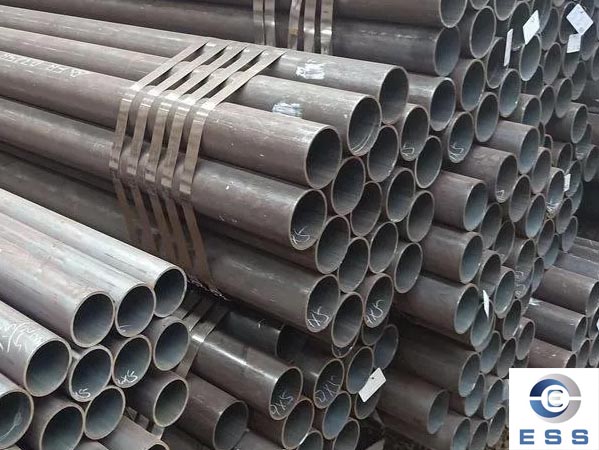Heating defects of tube blanks
The production of hot-rolled
seamless steel pipes generally requires two heatings from the billet to the finished steel pipe, that is, the heating before the piercing of the billet and the reheating of the blank pipe after rolling before sizing. When producing cold-rolled steel pipes, intermediate annealing is required to eliminate the residual stress of the steel pipes. Although the purpose of each heating is different, the heating furnace may also be different, but if the process parameters and heating control of each heating are improper, the tube blank (steel tube) will have heating defects and affect the quality of the steel tube.
The purpose of heating the tube blank before perforation is to improve the plasticity of the steel, reduce the deformation resistance of the steel, and provide a good metallographic structure for the rolled tube. The heating furnaces used are annular heating furnaces, walking heating furnaces, inclined bottom heating furnaces and car bottom heating furnaces.
The purpose of reheating the waste pipe before sizing is to increase and uniformize the temperature of the waste pipe, improve the plasticity, control the metallographic structure, and ensure the mechanical properties of the steel pipe. Heating furnaces mainly include walking reheating furnaces, continuous roller hearth reheating furnaces, inclined hearth reheating furnaces and electric induction reheating furnaces. The purpose of the annealing heat treatment of the steel pipe during the cold rolling process is to eliminate the work hardening phenomenon caused by the cold working of the steel pipe, reduce the deformation resistance of the steel, and create conditions for the continued processing of the steel pipe. The heating furnaces used in the annealing heat treatment mainly include a walking furnace, a continuous roller hearth furnace and a car hearth furnace.
The common defects of tube blank heating are: uneven heating of tube blank (
seamless carbon steel pipe) (commonly known as yin and yang surfaces), oxidation, decarburization, heating cracks, overheating and overburning, etc.
The main factors affecting the heating quality of the tube blank: heating temperature, heating speed, heating and holding time, and furnace atmosphere.

The heating temperature of the tube blank:
The main performance is that the temperature is too low or too high, or the heating temperature is uneven. If the temperature is too low, it will increase the deformation resistance of the steel and reduce the plasticity. Especially when the heating temperature cannot ensure that the metallographic structure of the steel is completely transformed into austenite grains, the tendency of cracks to occur in the tube blank during the hot rolling process will increase. When the temperature is too high, serious oxidation, decarburization and even overheating or overburning will occur on the surface of the tube blank.
The heating speed of the tube blank:
The heating speed of the tube blank is closely related to the generation of heating cracks in the tube blank. When the heating speed is too fast, the tube blank is prone to heating cracks. The main reason is: when the temperature of the surface of the tube blank increases, the metal inside the tube blank and the metal on the surface produce a temperature difference, resulting in inconsistent thermal expansion of the metal and thermal stress. Once the thermal stress exceeds the fracture stress of the material, cracks will occur. ; The heating cracks of the tube blank may exist on the surface of the tube blank or in the interior. When the tube blank with heating cracks is perforated, it is easy to form cracks or folds on the inner and outer surfaces of the capillary. Prevention prompts: When the tube blank is still at a low temperature after entering the heating furnace, a lower heating rate is adopted. As the temperature of the tube blank increases, the heating speed can be increased accordingly.
The heating time and holding time of the tube blank:
The length of the heating time and holding time of the tube blank is related to heating defects (surface oxidation, decarburization, coarse grain size, overheating and even overburning, etc.). Generally speaking, if the heating time of the tube blank at high temperature is longer, it is more likely to cause serious oxidation, decarburization, overheating and even overburning of the surface, and in severe cases, the steel tube will be scrapped. Preventive measures: A. Ensure that the tube blank is heated evenly and completely transformed into austenite structure; B. Carbides should be dissolved into austenite grains; C. Austenite grains cannot be coarse and mixed crystals cannot appear; D. Heating The rear tube blank cannot be overheated or overburned.
In short, in order to improve the heating quality of the tube blank and prevent heating defects, the following requirements are generally followed when formulating the heating process parameters of the tube blank:
A.The heating temperature is accurate to ensure that the perforation process is within the temperature range with the best tube blank wearability
B.The heating temperature is uniform, and strive to make the heating temperature difference between the longitudinal and transverse directions of the tube blank not greater than ±10°C; C. The metal burning loss is less, and the tube blank should be prevented from overoxidation, surface cracks, bonding, etc. during the heating process.
D. The heating system is reasonable, and the reasonable coordination of heating temperature, heating speed and heating time (holding time) should be done to prevent the tube blank from overheating or even overburning.
Read more : Infolding of hot rolled seamless steel pipes













 Eastern Steel Manufacturing Co.,Ltd not only improve product production and sales services, but also provide additional value-added services. As long as you need, we can complete your specific needs together.
Eastern Steel Manufacturing Co.,Ltd not only improve product production and sales services, but also provide additional value-added services. As long as you need, we can complete your specific needs together.










